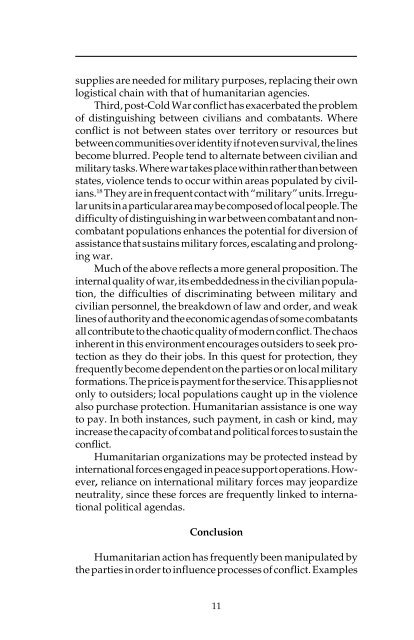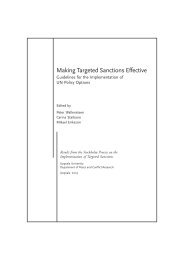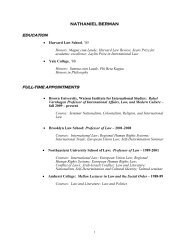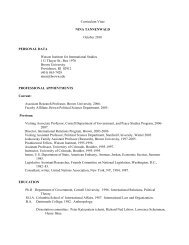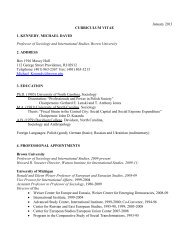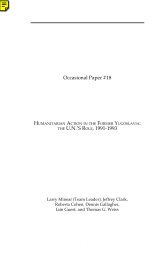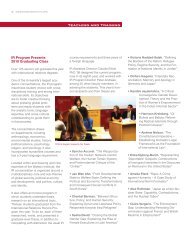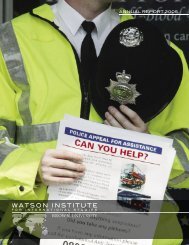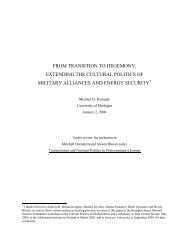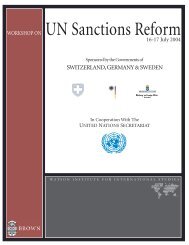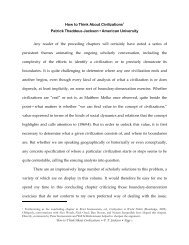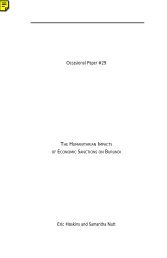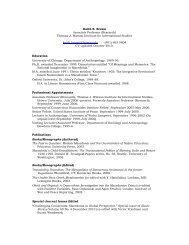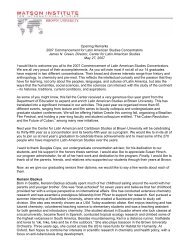Brown Cover OP 43 - The Watson Institute for International Studies
Brown Cover OP 43 - The Watson Institute for International Studies
Brown Cover OP 43 - The Watson Institute for International Studies
You also want an ePaper? Increase the reach of your titles
YUMPU automatically turns print PDFs into web optimized ePapers that Google loves.
supplies are needed <strong>for</strong> military purposes, replacing their own<br />
logistical chain with that of humanitarian agencies.<br />
Third, post-Cold War conflict has exacerbated the problem<br />
of distinguishing between civilians and combatants. Where<br />
conflict is not between states over territory or resources but<br />
between communities over identity if not even survival, the lines<br />
become blurred. People tend to alternate between civilian and<br />
military tasks. Where war takes place within rather than between<br />
states, violence tends to occur within areas populated by civilians.<br />
18 <strong>The</strong>y are in frequent contact with “military” units. Irregular<br />
units in a particular area may be composed of local people. <strong>The</strong><br />
difficulty of distinguishing in war between combatant and noncombatant<br />
populations enhances the potential <strong>for</strong> diversion of<br />
assistance that sustains military <strong>for</strong>ces, escalating and prolonging<br />
war.<br />
Much of the above reflects a more general proposition. <strong>The</strong><br />
internal quality of war, its embeddedness in the civilian population,<br />
the difficulties of discriminating between military and<br />
civilian personnel, the breakdown of law and order, and weak<br />
lines of authority and the economic agendas of some combatants<br />
all contribute to the chaotic quality of modern conflict. <strong>The</strong> chaos<br />
inherent in this environment encourages outsiders to seek protection<br />
as they do their jobs. In this quest <strong>for</strong> protection, they<br />
frequently become dependent on the parties or on local military<br />
<strong>for</strong>mations. <strong>The</strong> price is payment <strong>for</strong> the service. This applies not<br />
only to outsiders; local populations caught up in the violence<br />
also purchase protection. Humanitarian assistance is one way<br />
to pay. In both instances, such payment, in cash or kind, may<br />
increase the capacity of combat and political <strong>for</strong>ces to sustain the<br />
conflict.<br />
Humanitarian organizations may be protected instead by<br />
international <strong>for</strong>ces engaged in peace support operations. However,<br />
reliance on international military <strong>for</strong>ces may jeopardize<br />
neutrality, since these <strong>for</strong>ces are frequently linked to international<br />
political agendas.<br />
Conclusion<br />
Humanitarian action has frequently been manipulated by<br />
the parties in order to influence processes of conflict. Examples<br />
11


